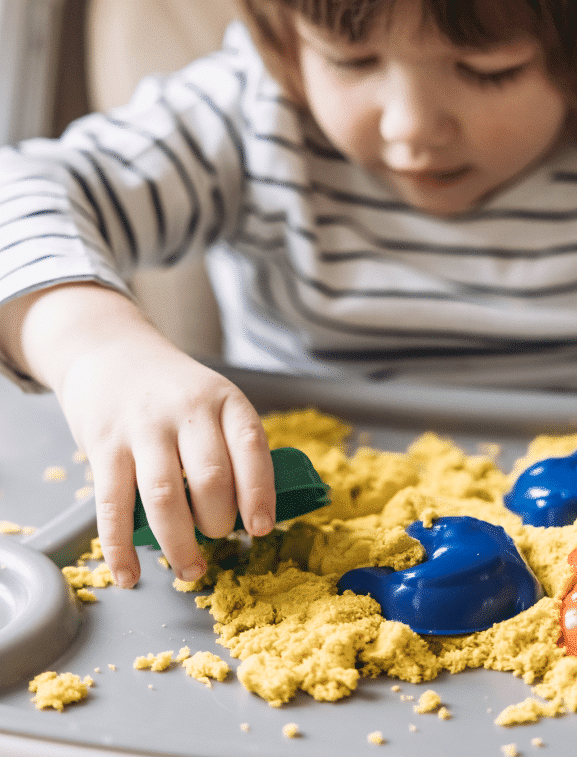DIY Sensory Bins
Creating a sensory bin is a fun and versatile way to engage your child in tactile play. Sensory bins can be made from simple household items and can be customized to fit your child’s preferences and sensory needs.
Fill a plastic container with materials such as dry rice, beans, sand, or water beads. You can add small toys, scoops, spoons, or even themed items like miniature dinosaurs or sea creatures. The idea is to give your child different textures to explore and manipulate. It’s a great way to help improve fine motor skills and encourage imaginative play.
As your child plays, encourage them to describe what they feel, using words like “soft,” “rough,” or “cold.” This adds a language development aspect to the activity. Be sure to supervise children during play to prevent any choking hazards, especially with younger kids.
Homemade Playdough or Slime
Making playdough or slime at home is not only a tactile sensory experience but also an opportunity for your child to be involved in a fun and interactive process. Homemade playdough or slime can be customized with different colors, textures, and scents to enhance the sensory experience.
To make playdough, combine flour, salt, water, and food coloring. You can add scents like vanilla or peppermint extract to stimulate the sense of smell. Allow your child to help with mixing and kneading the dough to further engage them in the activity. Rolling, squeezing, and shaping the dough will help improve fine motor skills and strengthen hand muscles.
If you choose to make slime, use child-safe recipes that include non-toxic ingredients like cornstarch and water. Adding glitter, beads, or small foam pieces to the slime can add another layer of sensory input. Always ensure that slime play is supervised, especially with young children who may be tempted to put it in their mouths.
Calming Sensory Bottles
Sensory bottles are simple to make and can provide a calming visual experience for children. They can be used as a tool to help children relax, especially during moments of stress or overstimulation. Sensory bottles typically contain water, glitter, and small beads or sequins that move slowly when the bottle is shaken.
To create a sensory bottle, fill a clear plastic bottle halfway with warm water, add glitter glue, and top it off with more warm water. You can also include small objects like beads or confetti. Seal the cap securely with strong adhesive to prevent leaks. The movement of the glitter and beads as they settle to the bottom can be soothing to watch and may help children calm down during moments of anxiety.
Use the sensory bottle as part of a calming routine. When your child feels overwhelmed, encourage them to sit in a quiet place and watch the glitter swirl and settle. It can be a helpful tool to incorporate into bedtime routines or moments of emotional regulation.
These sensory activities offer practical and enjoyable ways for children to engage in sensory play at home. By incorporating these activities into your daily routine, you can help support your child’s development while making learning fun and interactive. Sensory play is not only beneficial for children with extra needs but also helps promote overall growth and well-being.
